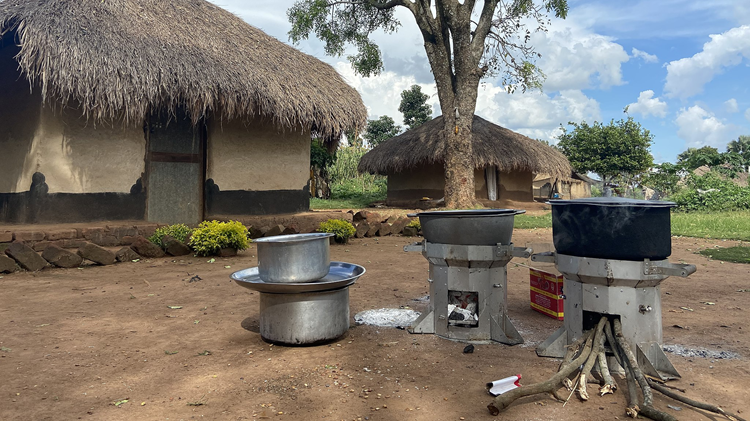Crossing Africa's debt impasse and financing squeeze

Tackling Africa's debt challenges and its brutal financing squeeze necessitates a comprehensive strategy encompassing efforts at both domestic and international levels.
The escalating debt service cost is a pressing issue that is hindering sustainable development in many African countries. Despite the significant decline in Africa's debt-to-GDP ratio following the debt relief provided by the Heavily Indebted Poor Countries Initiative (HIPIC) in the mid-2000s, the ratio has steadily risen again after it bottomed at 28.5% in 2008. It reached a peak of 64% of GDP in 2020 before stabilising at 63.5% over the period 2021-2023, still above its pre-pandemic level of 54.5% in 2019 (Figure 1).
After the global financial crisis, the accommodative global financial conditions encouraged several countries to issue their first Eurobonds. Additionally, the collapse in oil prices from 2014 to 2016 amplified fiscal deficits in oil-rich nations, resulting in heightened financing requirements and increased debt burdens. Consequently, even before the onset of the COVID-19 pandemic, many countries found themselves constrained by limited fiscal space.
The debt burden in Africa has been further exacerbated by recent global events, including the COVID-19 pandemic and the conflict between Russia and Ukraine. The high global interest rates have significantly increased the costs of servicing external debt. While some African countries have managed to bring their debt-to-GDP ratio to the pre-pandemic levels and the continent-wide debt-to-GDP ratio stabilised, sovereign debt conditions remain alarming in many others. In 2024, external debt service payments as a share of government revenue are higher than before the Covid-19 pandemic.
According to the African Development Bank, in 2024, African countries are projected to allocate around US$74 billion to debt service, marking a staggering 335% increase compared to its level of US$17 billion in 2010. However, the anticipated wave of defaults has yet to materialise; only a few countries, Zambia and Ghana, have officially defaulted on their debt although many countries are teetering on the edge of a precipice. Countries at risk of default have to slash the already meagre spending on education, health and critical infrastructure to continue servicing their debt and avoid the cost of default. This precarious situation threatens their future and the well-being of their citizens.
For example, in 2020, Africa allocated an average of 3.5% of its GDP to education. However, according to an IMF analysis, meeting the critical Sustainable Development Goal of ensuring universal primary and secondary school enrollment by 2030 might necessitate doubling education expenditures as a share of GDP. Given the situation of high indebtedness, that is not possible for many countries.
When a country officially defaults on its debt it faces severe consequences. It loses access to the international capital market for years and it takes several years to receive any relief due to the inefficacy of the current global debt restructuring architecture. This was evident in the case of Zambia which took over three years to reach a debt restructuring deal with private creditors. The longer it takes to reach an agreement, the more economic pain there is as authorities keep fiscal policy tight for longer. A default also jeopardises a country's credit ratings and is viewed as a sign of mismanagement and failure from the ruling government, increasing the probability of losing the next elections. These factors dampen incentives for countries to declare debt challenges.
In some African countries, the level of debt is manageable but most are facing a funding squeeze and a credit crunch. Amid a slowdown in financing from Multilateral Development Banks (MDBs) and reductions in Official Development Assistance (ODA), they cannot raise affordable funding to support their development plans, including the expensive climate change adaptations due to higher global interest rates and punitive risk premiums. Africa is the least funded region despite having the largest development requirements.
African countries are projected to allocate around US$74 billion on debt service in 2024, a 335% increase from 2010
Now that many advanced countries have managed to slay the inflation beast, there is an expectation that central banks will start cutting interest rates which could help countries borrow at relatively low costs. However, it is doubtful that they will cut them to the pre-crisis levels anytime soon, given the risk of higher inflation amid geopolitical tensions and global shipping disruptions.
What must be done to ease Africa's debt pressure and create budgetary space for development spending?
At the domestic level, improving government revenues through broader and more effective tax systems and creatively using resources could enhance growth and stabilise debt dynamics. African countries need to optimise domestic revenue mobilisation. Digitalising the tax collecting system could help dematerialise revenue collection and minimise the negative effect of corruption on domestic revenue mobilisation. Gambia, for example, recorded a 23% increase in customs revenue in 2023, one year after adopting an automated system for customs data software. Policymakers should also reconsider or refine the numerous and generous tax incentives offered to multinational corporations (MNCs), international organisations and civil society organisations to ensure that their advantages outweigh the resulting revenue loss. Tax incentives can be costly, which can undermine fiscal sustainability. A recent study finds that Uganda’s annual revenue losses due to tax holidays reached US$ 42 million in 2020, about one-fifth of the country’s total corporate income tax. Certain domestic factors such as security, exchange rate, political stability, inflation and infrastructure are key to attracting MNCs, instead of fiscal incentives.
The quality of spending also needs to be improved. Embezzlement and lack of transparency in government spending contribute to misallocating resources and accumulating debt. For instance, Africa's public investment efficiency gap is estimated at 39%, meaning that out of one dollar spent on investment, 61 cents effectively translate into infrastructure while the remaining 39 cents is wasted due to corruption, mismanagement of public funds and poor selection of projects. However, some countries, such as Rwanda and Namibia, stand out with an efficiency score close to 100%, while Nigeria lags, with an efficiency gap of more than 70%. Given the high infrastructure cost, governments should prioritise, where possible, the public-private partnership (PPP) and use the limited resources to invest in other growth-enhancing sectors.
The African Union can play a pivotal role by leveraging its seat at the G21 to channel low-cost financing and more grants for African countries. The long-term solution is that African countries must implement sound economic policies and improve governance to enhance economic and export diversification and increase public finance resilience to external shocks. In this context, the full implementation of the African Continental Free Trade Agreement could be a game-changer, as it has the potential to significantly boost intra-African trade which is currently dominated by low-value manufacturing goods.
The broader international community should also help African countries access cheaper financing options such as Special Drawing Rights (SDRs) by rechanneling unused SDRs to countries in need and revising allocation frameworks to consider regional (or country) specific financial needs. The inequality embedded in the current global financial architecture needs to be addressed by expanding the representation of developing countries in the governing bodies of key international financial institutions to enhance decision-making, increase transparency, and reduce the cost of capital. Advanced countries should also fulfil their aid and climate financing commitments and push for fair international taxation, such as the agreement of a 15% global minimum tax on corporate profits. More important than the minimum tax is in which jurisdiction the tax would be paid.
The African Union can leverage its G21 seat to channel low-cost financing and grants for African countries
The international community should push for a reform of the credit rating agencies' methodologies to improve African countries' risk assessment and create opportunities for foreign investment. The G20 Common Framework for Debt Treatment needs an overhaul to create a well-functioning and efficient debt resolution system capable of bringing all creditor classes to the negotiation table as fast as possible and ensuring that each creditor group shares the burden evenly for countries needing debt restructuring.
Finally, given the critical importance of debt transparency, African countries and their international partners must push for reforms to improve domestic legal frameworks to prevent hidden debts and end opaque resource-backed loans dominated by Chinese lenders. This will benefit both borrowers and creditors by avoiding mistrust from creditors that others are paid while they roll over or restructure their loans.
Overall, resolving Africa's debt deadlock and financial constraints necessitates a blend of domestic reforms, international cooperation and innovative financing solutions to foster sustainable debt management and support economic growth and development.
Image: JeFFa/Flickr






